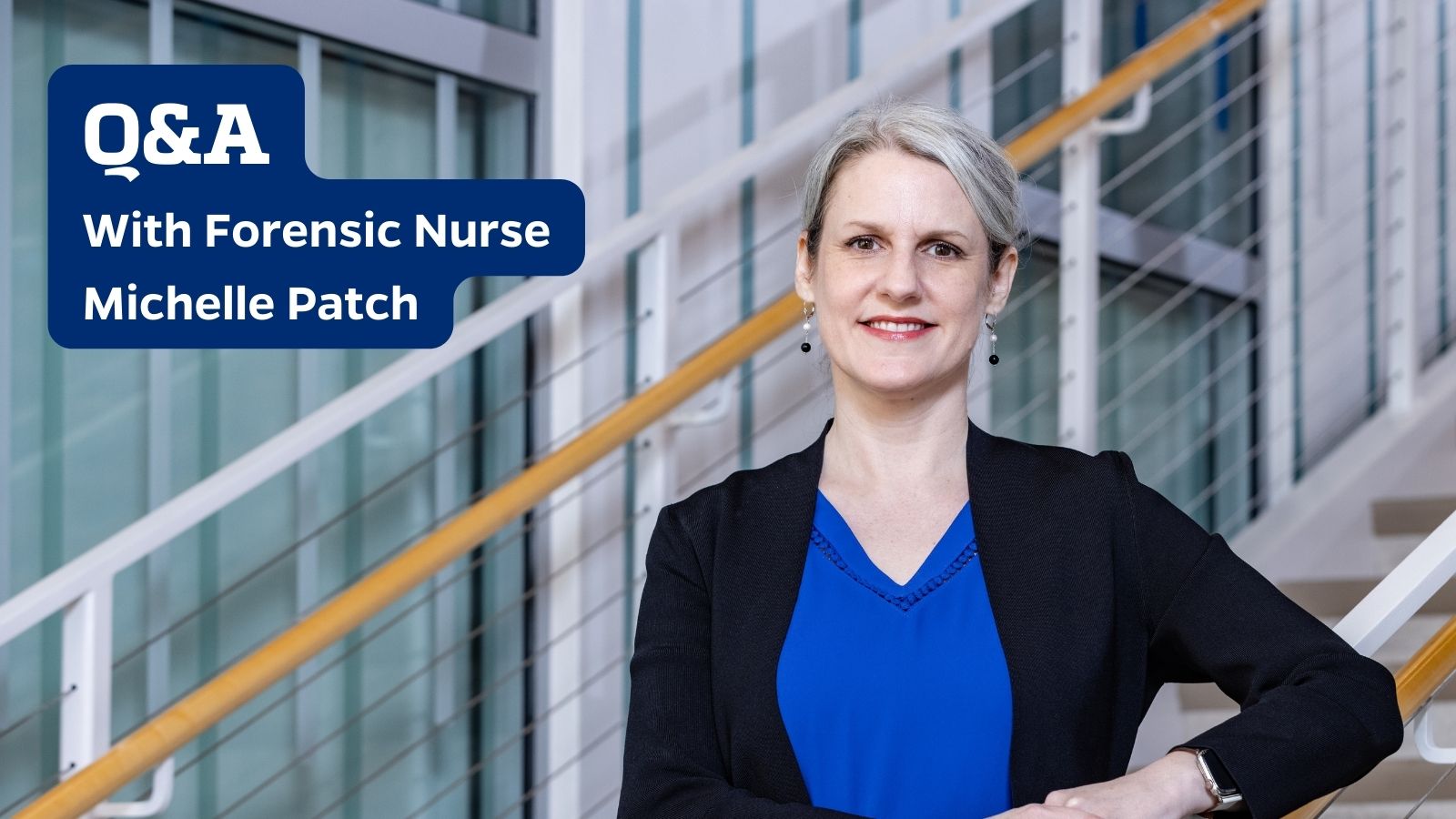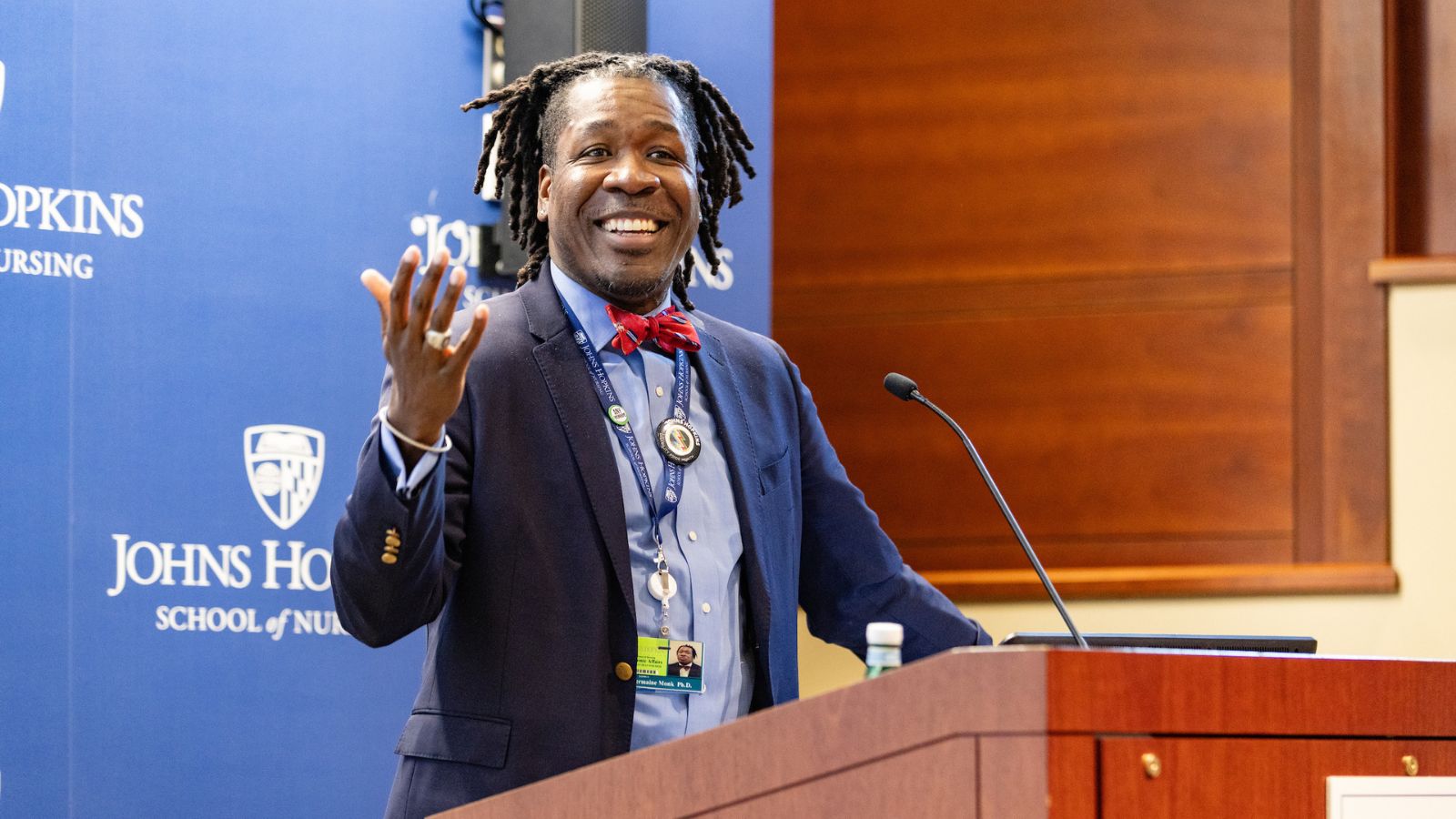Clockwise from top left, Johns Hopkins School of Nursing faculty members Susan Renda, Marianne Fingerhood, Karan Kverno, Tammy Slater, Kelly Gleason, and Michal Goodwin, authors of “What Motivates Our Practice Colleagues to Precept the Next Generation?”
Ask nursing preceptors why they make the effort and the (most often unpaid) time, and many will cite “passion for teaching students” or “professional obligation.” Those who don’t serve as preceptors—or don’t anymore—cite the effort and the unpaid time. They could add work constraints … perhaps even fatigue over being constantly pressed to do so by nurse practitioner programs and colleagues.
It’s a tough situation on all sides. An American Association of Colleges of Nursing review of advanced practice registered nurse education reported that over 60 percent of schools with nurse practitioner programs expressed extreme concern over a shortage of preceptors combined with the limited number of clinical sites and NP faculty, leading programs to turn away qualified applicants. This plays out while the demand for advanced practice nurses soars.
So NP programs have only further emphasized the search, spreading the burden among faculty to find appropriate preceptors for their students, with some faculty spending 90 percent to 100 percent of their role on clinical placements.
NP students who work with well-prepared preceptors during their clinical experiences are more likely to contribute effectively to patient care in the future.”
In “What Motivates Our Practice Colleagues to Precept the Next Generation?,” Johns Hopkins School of Nursing faculty members Susan Renda, DNP, RN, FAAN, Marianne Fingerhood, DNP, ANP-BC, Karan Kverno, PhD, PMHCNS-BC, PMHNP-BC, Tammy Slater, DNP, CRNP, Kelly Gleason, PhD, RN, and Michal Goodwin, PhD, MS, RN, FAAN—several of them seasoned preceptors themselves—sought to establish the needs and motivations of JHSON preceptors and build a clearer picture of how to foster ever more of these crucial relationships. “NP students who work with well-prepared preceptors during their clinical experiences are more likely to contribute effectively to patient care in the future,” the authors explain.
Yet it’s a bit daunting: “Until there is federal funding for graduate nursing education (as it exists in the medical model, Medicare spends more than $15 billion annually on graduate medical education for medical students), schools of nursing will continue to rely heavily on preceptors as clinical partners in the education process,” they write. “Remuneration will remain an issue, especially because physician preceptors are accustomed to reimbursement for teaching. Nurses are less likely to ask for remuneration because they are more familiar with the not-for-payment model, appreciate the need to grow the workforce to meet demand, and recognize the intrinsic benefits of precepting on a personal level.”
So more incentives must be found on that level, the authors explain. Maybe not open checkbooks, unfortunately, but at least open arms: “One implication from the findings is that schools of nursing can demonstrate appreciation and promote preceptors’ development and engagement by improving preceptor access to faculty mentors and educational resources. The development of preceptor competencies enhances the preceptor as an extension of the faculty.”

 Forging Policy: How Can Doulas Improve Black Maternal Health?
Forging Policy: How Can Doulas Improve Black Maternal Health? Q & A With Forensic Nurse, Michelle Patch
Q & A With Forensic Nurse, Michelle Patch Dr. Robert Atkins, Anna D. Wolf Endowed Professor
Dr. Robert Atkins, Anna D. Wolf Endowed Professor Forging Policy: Associate Dean Jermaine Monk and Education After Affirmative Action
Forging Policy: Associate Dean Jermaine Monk and Education After Affirmative Action Most People Want to Breastfeed, But Need More Support To Do So
Most People Want to Breastfeed, But Need More Support To Do So






